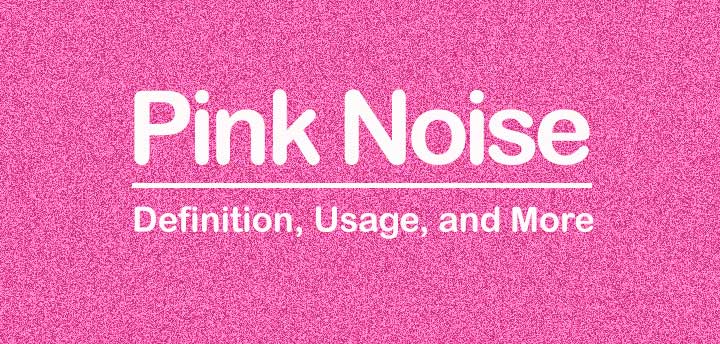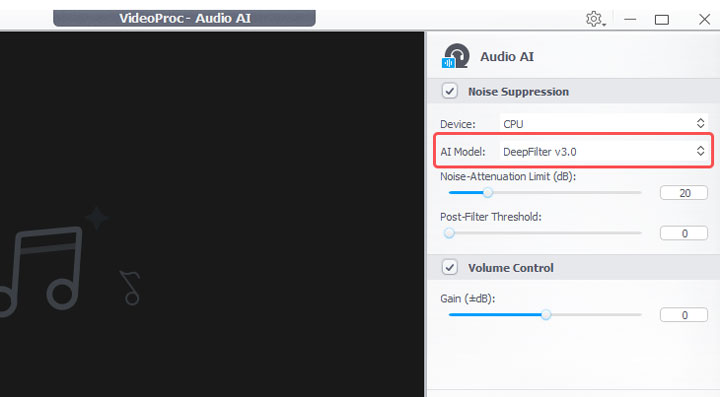While white noise is familiar, you may have noticed pink noise being mentioned more frequently. Videos tagged with or related to pink noise have gained popularity on platforms like TikTok, garnering billions of views. Recent research has also shed light on the potential benefits of pink noise. For example, a study published this month in the Journal of the American Academy of Child & Adolescent Psychiatry found a small but statistically significant improvement in task performance among children and young adults with ADHD when exposed to white and pink noise. So what exactly is pink noise, and how does it differ from the more well-known white noise? What makes it interesting, and what could it potentially be used for? If you're curious to learn more about this sound that's been gaining attention, keep reading as we explore the properties and uses of pink noise.

What Is Pink Noise
Often described as nature's most common noise, pink noise is a type of sound containing all audible frequencies, but with greater intensity in the lower ranges. More specifically, pink noise follows a 1/f curve, where the power decreases predictably as the frequency increases - dropping by 3 decibels with every doubling of frequency (per octave).
A unique characteristic of pink noise is its fractal patterning. If you examine its waveform graph and zoom in or out, you'll notice self-similar, repeating patterns across different scales. This fractal repetition is what gives pink noise its balanced energy distribution across the frequency spectrum.
Why It's Called Pink Noise
When we refer to different types of noise, we often use color names to describe their unique sound characteristics. The concept of "color noise" relates to how different sounds are distributed across various frequencies, much like how colors in light have distinct wavelengths. Just as white light contains an even blend of all visible wavelengths, white noise has equal power across all audible frequencies. As for pink noise, it gets its name from having a power spectrum that resembles the pinkish-red hue of certain types of light, where the power falls off at a rate of 1/f across frequencies.

Optional Reading: Other Types of Colored Noise
In addition to pink noise, there are other types of colored noise, each characterized by a specific power spectrum:
Brown Noise (or Red Noise): This type of noise has even more power concentrated at lower frequencies than pink noise. The power decreases by 6 dB per octave, meaning that low frequencies dominate even more. Brown noise is often described as having a deep, rumbling quality.
Blue Noise: It has more power at higher frequencies, with the power increasing by 3 dB per octave. This results in a high-pitched, hissing sound. Thus, you can think of it as the opposite of pink noise.
Purple Noise: This is also known as violet noise. It has even more power at higher frequencies, with the power increasing by 6 dB per octave. It is characterized by a very sharp, high-pitched sound.
Gray Noise: Gray noise is a type of noise that has been filtered to have a perceived equal loudness at all frequencies. This means that it takes into account the human ear's sensitivity to different frequencies, making it sound more balanced and uniform to the listener.

What Does Pink Noise Sound Like
Pink noise is often described as a balanced, natural "shushing" sound, reminiscent of familiar sounds like rainfall, wind gently rustling leaves, waves lapping at a shore, or the steady flow of a waterfall. It possesses a soothing quality that many find preferable to the harsher "hiss" of white noise. Unlike white noise which distributes energy equally across all frequencies, pink noise features equal power in octave bands. This means it boasts a greater presence in the lower frequencies while tapering off in the higher ranges. This balanced distribution contributes to its perceived naturalness and softness, making it less jarring to the ears.
Is Pink Noise Good for Sleep
Pink noise has been shown to potentially improve sleep quality, offering promising benefits according to several studies.
A systematic review published in the Journal of Clinical Sleep Medicine by Capezuti et al. (2022) found that 81.9% of the 11 studies examined reported positive sleep improvement outcomes with pink noise, a higher proportion than with other types of auditory stimulation.
In 2019, a team of researchers at Northwestern University conducted a study that explored the specific effects of pink noise on sleep and memory. Led by Dr. Malkani, the team used pink noise to enhance slow-wave sleep, as its frequency distribution closely mirrors brainwaves during this deep sleep phase. Participants exposed to pink noise pulses during slow-wave sleep demonstrated improved memory recall, especially in older adults. This suggests that pink noise could be a valuable tool in promoting better sleep and cognitive function, especially among older individuals.
As more studies explore the impact of pink noise on sleep, it's becoming clear that adding this soothing sound to your bedtime routine might be an easy way to improve your sleep quality.
More Benefits and Uses of Pink Noise
Pink noise is often described as a natural, calming sound, reminiscent of rainfall, rustling leaves, or a gentle waterfall. This soothing quality makes it popular for:
- Focus: Some people find that pink noise helps them concentrate by blocking out distractions.
- Tinnitus Relief: Pink noise may help mask the ringing in the ears associated with tinnitus.
- Acoustic Testing: Its balanced frequency distribution makes it ideal for testing speakers and room acoustics.
When Pink Noise Becomes Unwanted
While pink noise is beneficial for sleep and has healing properties, it can sometimes be distracting, such as in podcasts, professional music tracks, or online audio courses. Fortunately, eliminating pink noise is straightforward with tools like VideoProc Converter AI. This software uses advanced AI to intelligently detect and remove unwanted pink noise from your audio or video files.
VideoProc Converter AI – Automatically Remove Pink Noise with AI
- Automatically detect and eliminate background pink noise from videos/audio
- Handle static and dynamic noise, incl. white noise, wind sounds, and hums
- Support 370+ video and audio formats with no compatibility issues
- Rich AI features, incl. 400% video resolution upscaling and stabilization
- All-in-one: convert, compress, download, and record videos and audio
How to Eliminate Pink Noise from Audio or Video
Step 1. Download, install, and run VideoProc Converter AI on your computer. Click the Audio AI icon.

Step 2. Check the Noise Suppression option and select an AI model. The default settings for other properties should work well for most audio files, based on our tests. Click the playback icon to preview the audio and hear the difference. If needed, you can experiment with different Noise Suppression setting options to fine-tune the results.

Step 3. Adjust the video or audio codec, quality, and GOP settings according to your requirements. Finally, choose your destination folder and click the Run button to export the audio/video file that sounds clear without pink noise.
FAQs
Is pink noise different from white noise?
Yes. Many people confuse white noise and pink noise, as both contain all audible frequencies and are considered broadband noise signals. However, despite their similarities, they have distinct characteristics that make them sound different.
Noise has equal power across all frequencies. Human eyes are more sensitive to higher-pitched sounds, so the high-frequency components in white noise are more pronounced and can come across as shrill or sharp.
Pink noise, as said, has a decreasing power distribution as the frequencies increase. This aligns better with how our ears naturally perceive sound. The gradual reduction in power at higher frequencies gives pink noise a more well-balanced and soothing quality to our ears.
What is the opposite of pink noise?
It's blue noise. Think of pink noise as having a natural balance, with power decreasing as frequency increases, giving it a warm, even sound. Blue noise is the polar opposite. It boasts increasing power with rising frequency, emphasizing the high end and creating a hissy, bright sound. This direct reversal of the power-frequency relationship makes blue noise the definitive opposite of pink noise.








